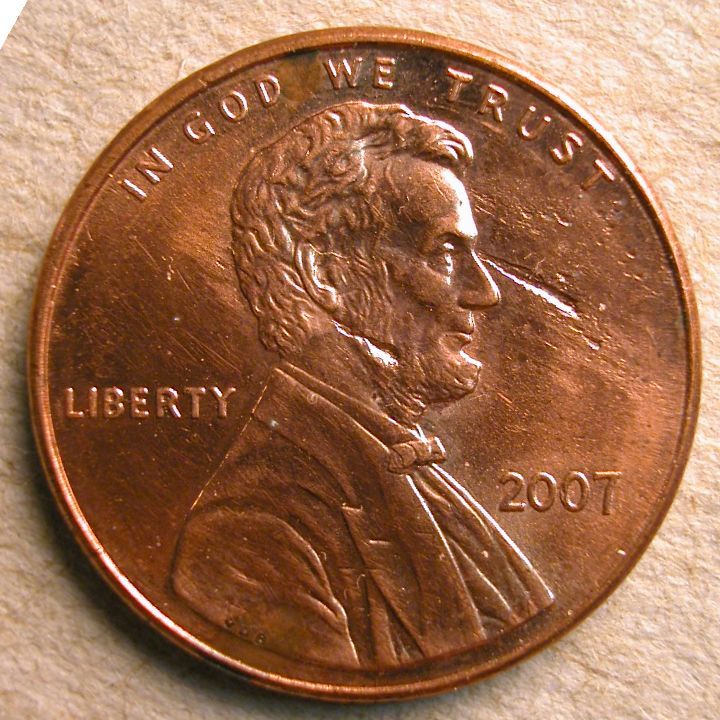I think I've posted this long ago, after my 54-S roll fest search, but have come back to it for more discussion. The pictured coin has some odd surface characteristics. The coin is BU, but has what look like areas of corrosion. Those areas are incuse, not raised, so are not a product of a rusty die with missing surface metal. I found quite a few of these in a couple of rolls, and they span multiple dies. Looking at a few coins from the same die, the marks are "similar", and some are exactly the same (or at least similar enough that you would conclude they are from the die, not some other phenomenon), but there are slight differences that seem to be from a progression of whatever caused this phenomenon.
My hypothesis is that we are indeed seeing the product of a rusty die, but that the rust was still in place. Because rust on steel actually raises the surface slightly (since the rust is lower density than the steel), this produces an incuse area on the coin during striking. These rusty areas can wear away quickly, so there is a fast progression.
Now, is my hypothesis correct? Anyone else seen these sorts of corroded-looking coins? Note the reverse has similar characteristics.
IMG_0011_1.JPG
My hypothesis is that we are indeed seeing the product of a rusty die, but that the rust was still in place. Because rust on steel actually raises the surface slightly (since the rust is lower density than the steel), this produces an incuse area on the coin during striking. These rusty areas can wear away quickly, so there is a fast progression.
Now, is my hypothesis correct? Anyone else seen these sorts of corroded-looking coins? Note the reverse has similar characteristics.
IMG_0011_1.JPG



 Only thing I can think of off hand is orange peel
Only thing I can think of off hand is orange peel  Be verwy verwy quiet... I'm hunting coins!!!
Be verwy verwy quiet... I'm hunting coins!!! 
Comment